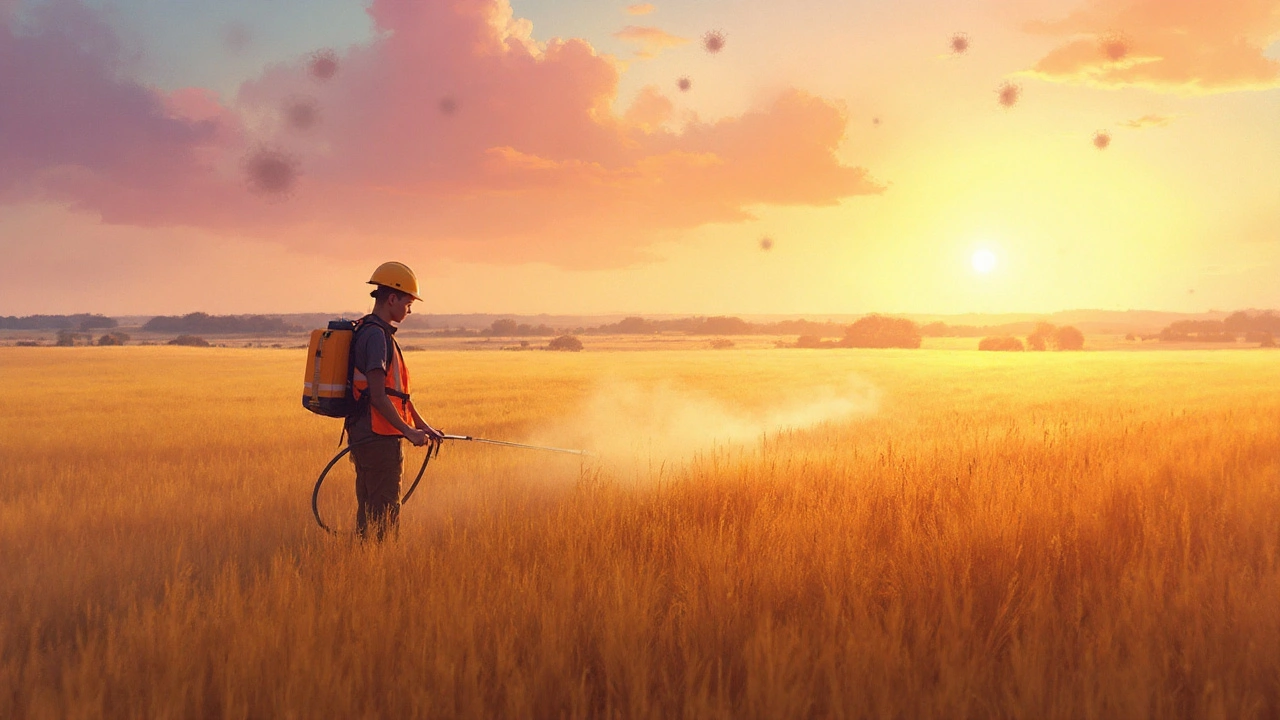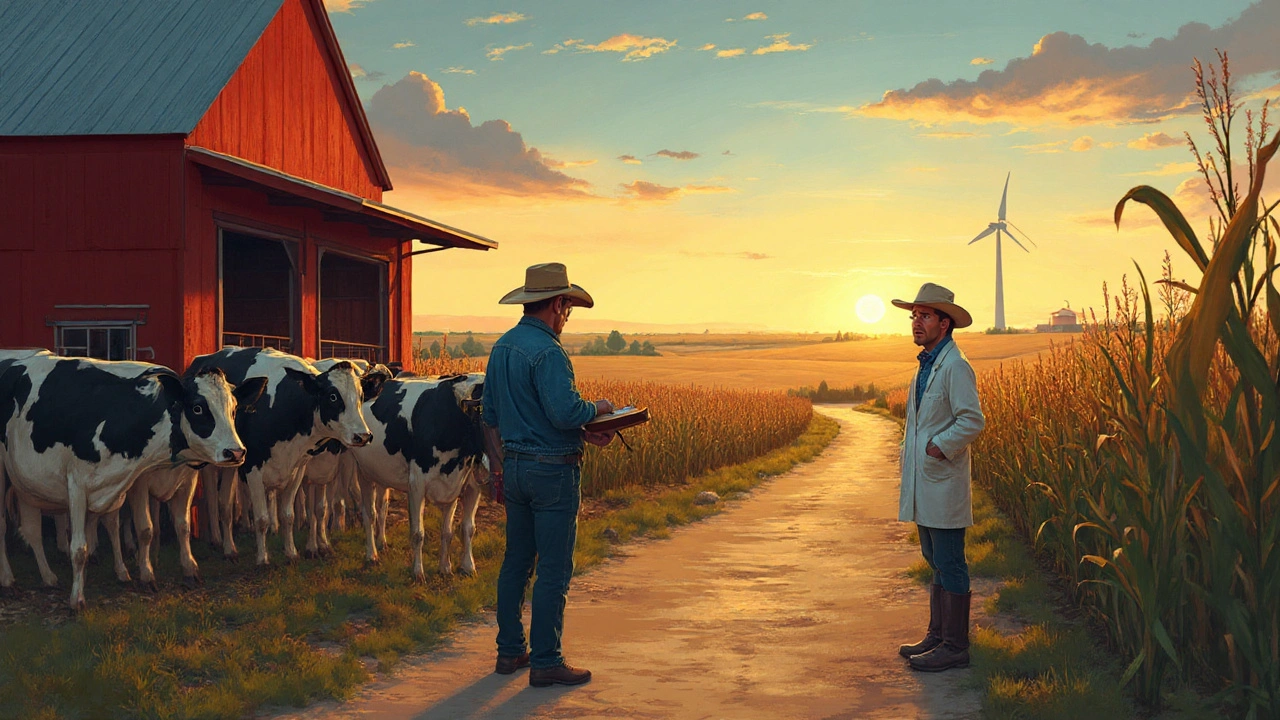Novel Influenza Virus is a highly mutable respiratory pathogen that can jump from birds or swine to humans and other mammals, often causing severe disease and rapid spread. When such a virus bursts onto the scene, its ripple effects reach far beyond hospitals. Farmers, grain traders, and families at the dinner table all feel the shockwaves. This article unpacks the chain of events that turns a health scare into a food‑security crisis, and offers concrete steps to break the chain.
Why Influenza Matters to Food Production
Most people think of flu as a human ailment, but the Zoonotic Transmission process by which viruses move between animal species and humans is a two‑way street. Birds and pigs act as reservoirs, and when a novel strain evolves, it can spill over into livestock herds. Once inside cattle, sheep, or poultry, the virus spreads like wildfire, slashing herd health and productivity.
Direct Hits on Livestock Production
Livestock systems are especially vulnerable because of their dense living conditions. An outbreak can cause:
- Mortality rates upward of 30% in affected flocks.
- Sharp drops in milk yield - a typical dairy herd can lose 15‑20% of output in the first month.
- Reduced weight gain in beef cattle, extending feed‑lot cycles and inflating feed costs.
- Trade bans from importing countries, cutting market access.
These losses feed directly into price spikes for meat, dairy, and eggs, hitting consumers hardest in low‑income regions.
Knocking on the Door of Crop Production
It isn’t just animals that feel the sting. Influenza can indirectly sabotage crops in three ways:
- Labor shortages: Farmhands fall ill, slowing planting and harvesting.
- Disrupted Supply Chain Resilience the ability of food‑distribution networks to adapt to shocks. Transport delays mean perishable goods spoil before reaching markets.
- Reduced availability of animal‑derived fertilizers as livestock numbers shrink, lowering soil fertility and yields.
The result is a dip in total agricultural output that compounds the loss of animal protein.
Food Security: From Availability to Access
Food Security the condition where all people have physical and economic access to sufficient, safe, and nutritious food hinges on three pillars: availability, access, and utilization. A novel influenza outbreak attacks each pillar:
- Availability: Lower harvests and livestock slaughters shrink the overall food pool.
- Access: Price spikes limit what families can afford, especially in urban centers.
- Utilization: Disrupted supply chains can lead to longer storage times, degrading nutritional quality.
Vulnerable populations feel the impact first, widening the gap between food‑secure and food‑insecure groups.
How Governments and Agencies Respond
Effective pandemic response blends human health measures with agricultural safeguards. Key actions include:
- Vaccination campaigns for at‑risk animal species, guided by Veterinary Surveillance systematic monitoring of animal health to detect emerging diseases early.
- Strict biosecurity protocols on farms - footbaths, controlled visitor access, and disinfection stations.
- Rapid culling of infected herds, coupled with compensation schemes to discourage illegal sales.
- Strategic grain reserves to buffer short‑term shortages.
When these measures align, the shock to the food system can be blunted.

Mitigation Strategies for Farmers
Even without government aid, producers can build resilience:
- Breed diversification: Mixing breeds that differ in disease susceptibility reduces the chance of a whole‑herd wipe‑out.
- Integrated pest‑management practices that keep bird and rodent populations - common influenza reservoirs - at bay.
- Early‑warning networks that share diagnostic results across regions, allowing farms to act before the virus spreads.
- Alternative income streams, such as agro‑tourism or value‑added processing, soften financial blows when livestock sales falter.
Adopting these tactics turns a reactive stance into a proactive one.
Future Outlook: Climate Change and One‑Health
Warmer temperatures expand the range of wild birds and swine, creating new pathways for One‑Health an interdisciplinary approach that recognizes the link between human, animal, and environmental health threats. Modeling studies from the World Health Organization suggest that every 1°C rise in average temperature could increase the emergence rate of zoonotic influenza by up to 10%.
Investing in cross‑sector research - virology labs, climate models, and farm‑level data - will be essential to stay ahead of the curve.
Seasonal vs. Novel Influenza: A Quick Comparison
| Attribute | Seasonal Influenza | Novel Influenza (NIV) |
|---|---|---|
| Transmission Rate (R0) | 1.3‑1.8 | 2.5‑4.0 |
| Human Mortality Rate | ≈0.1% | 0.5‑2.5% |
| Livestock Mortality | Rare | 10‑30% in affected herds |
| Crop Yield Impact | Indirect, via labor loss | Direct (via fertilizer shortage) + indirect |
| Control Measures | Annual vaccine, hygiene | Emergency vaccine, culling, biosecurity |
The higher R0 and mortality figures mean that a novel strain can cripple food systems much faster than the flu we see each winter.
Related Topics to Explore
Understanding the full picture calls for digging into adjacent subjects such as viral evolution in wild birds, global grain market dynamics, and digital traceability platforms for livestock. Each of these areas offers tools and insights that can further shield food supplies from future outbreaks.
Frequently Asked Questions
How does a novel influenza virus reach farms?
The virus typically travels from wild birds or swine to domestic animals through shared water sources, feed, or contaminated equipment. Once inside a farm, dense animal housing accelerates spread.
Can a flu outbreak affect grain prices?
Yes. Labor shortages and delayed planting reduce harvests, while higher feed costs push up grain demand for animal feed, together driving prices upward.
What biosecurity steps are most effective?
Key steps include limiting farm visitors, disinfecting footwear and vehicles, separating age groups, and regular health monitoring of all livestock.
Is there a vaccine for novel influenza in animals?
Emergency vaccines can be produced when a new strain is identified, but development takes 4‑6 months. Early vaccination of high‑risk herds is the best preventive measure.
How can consumers protect themselves during an outbreak?
Buy from reputable sources, diversify protein sources (e.g., plant‑based options), and store a small emergency food reserve. Staying informed about recalls and regional alerts also helps.






BERNARD MOHR
September 26, 2025 AT 02:28Jake TSIS
September 26, 2025 AT 15:44Akintokun David Akinyemi
September 28, 2025 AT 14:10Jasmine Hwang
September 29, 2025 AT 08:52katia dagenais
September 30, 2025 AT 16:20Josh Gonzales
October 2, 2025 AT 10:46Jack Riley
October 2, 2025 AT 13:14